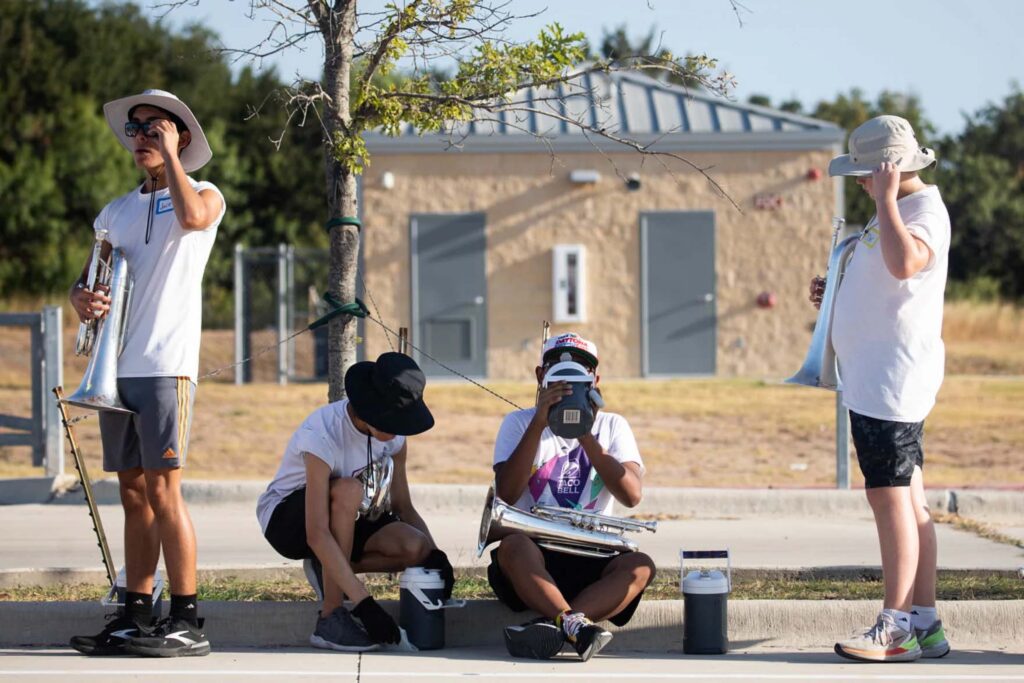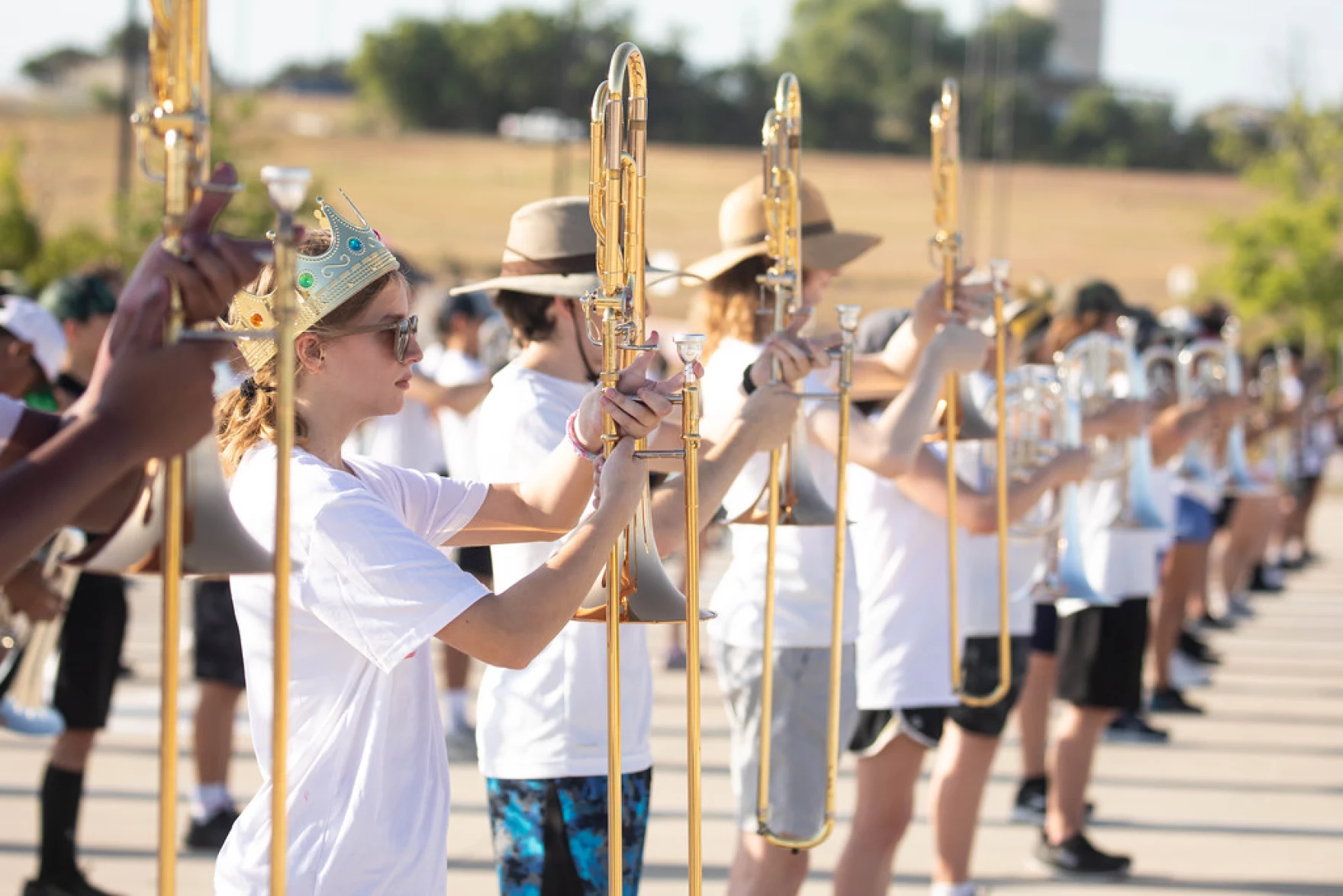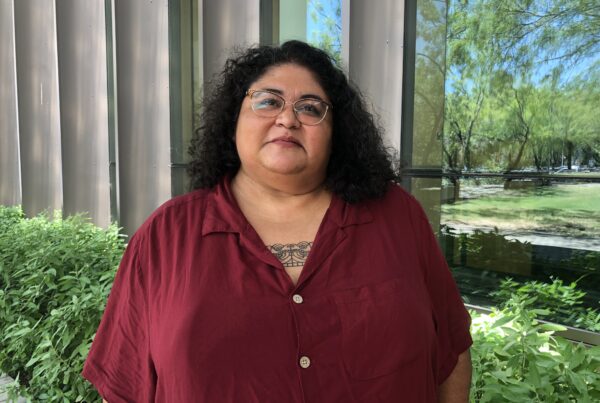From KUT:
Dozens of high school students stood in rows in a parking lot at Johnson High School for marching band practice. Tubas, trumpets and mellophones glinted in the bright sun. It was just a few minutes after 8 a.m. and already 80 degrees in Buda. But that was still much cooler than the triple-digit temperatures Central Texans have endured this summer.
Kyle is one of three drum majors in the Johnson Jaguar Band. The incoming junior said he was a little concerned about the heat when summer band practice started.
“We had a couple freshmen get, not like heat stroke or anything, but I think we had a few freshmen pass out in our spring camp,” he said.
So far, Kyle said, no one has passed out, and heat precautions the district is taking seem to be working.
The ‘Four H’s’ of safety
Jason Adam, the assistant director of fine arts for the Hays Consolidated Independent School District, said keeping students safe while they practice in the heat is a top priority.
“The students have a scheduled-out rehearsal, with water breaks every 15 minutes. And then in the summertime, we only rehearse [outside] in the morning hours,” he said. “By the time it gets to the heat of the afternoon, they’re inside for the rest of the day.”
A water break — known as a “gush and go” — every 15 minutes was a welcome change for Addie, another incoming junior in the band. She said last year the water breaks happened about every 30 minutes.
“It’s a lot better because last year was really rough,” she said.

Members of the band take a water break, known as a “gush and go.”
Patricia Lim / KUT
Adam said students wear light-color, loose-fitting clothes for practices. Band directors also participate in trainings held by the University Interscholastic League, which creates rules for extracurricular activities at Texas public schools.
“When it comes to keeping kids safe, we refer to the ‘Four H’s,’” UIL Deputy Director Jamey Harrison said. “Head, heart, heat and history — the medical history of the student. Those four things need to be addressed as top priorities for us to keep kids safe.”
Hays CISD also has a medical tent that parent volunteers take turns staffing. They’re known as “band-aids.”
“Anytime the kids are outside, band-aids are on the field with them to make sure they’re all good [and] taken care of,” Carolyn Meredith, one of the volunteers, said.
Gatorade and Pedialyte were nestled in a cooler brimming with ice. There were also cooling towels and a contraption called a “cow” that students pumped water out of to refill 1-gallon water bottles.
Meredith described the tent as a place students can rest. And, at one point that morning, a student who was a little flushed sat down under the tent to take a break from the heat.
From ‘want’ to ‘need’
Eventually there will be more space for the 300-student band and color guard to practice inside, Adam said. Hays CISD voters approved a bond proposition in May that allows the district to borrow money to build a fine arts gym and larger band hall.
“They’ll be able to have some larger indoor rehearsals that will help in the heat,” he said. “So we’re looking forward to that.”
Another bond proposition on that ballot, which would have helped protect students from extreme weather, was opposed by just over 55% of voters. If Prop D had been approved, the district would have had the green light to borrow $52 million to build covered pavilions at its three high schools.
“Generally [you’re] significantly cooler under those pavilions than you would be if you were out in the sunlight and the heat,” Hays CISD Chief of Communication Tim Savoy said.
Savoy said he understands pavilions were not a top concern for voters this time around, especially because there are so many other high-priority projects needed to accommodate the district’s fast-growing student population. (Hays CISD is expected to grow by 1,000 students per year for the next decade.)
Even if voters had approved the pavilions, Savoy said, they would not have been installed by this summer. That makes the other precautions the district is taking all the more important.
And pavilions could be included in a future bond.
“I think probably after this summer those pavilions may scooch a little closer to the ‘need’ column from the ‘want’ column because this has been a pretty tough summer,” he said.
Support for artificial turf
Savoy said he’s seen a similar shift in thinking around artificial turf in the face of increasing temperatures. About five years ago, he said, people preferred grass fields to turf ones. However, that’s changed because keeping grass fields safe for students requires a lot of water.
“The reality we face is that we’re going to be under water restrictions in the hottest part of the summer and without water grass is going to die,” he said.
There have been concerns about how safe artificial turf is. Scientists have said more research is needed to determine whether chemicals that can be found in the turf have longterm health effects. The National Recreation and Park Association also notes that turf fields can get much hotter than grass fields.
Savoy said Hays CISD is going to require all the new turf fields vendors install include a cooling material, “which, depending on the company, could be ground coconut hulls, olive pits, wood, or a synthetic cooling plastic.” He added that athletic trainers currently check the temperature of existing turf fields before practices and games.
“Though there are challenges [with] the heat regarding all of the playing field options, we still believe turf is the best,” he said. “It goes back to watering restrictions and trying to maintain grass fields that would turn hard and be very dangerous for hits and falls.”
The brutal temperatures are not dulling students’ enthusiasm for the new year, though.
“I’m just really excited. This year is going to be a great year,” said Kyle.
The new school year for Hays CISD starts Aug. 15.















